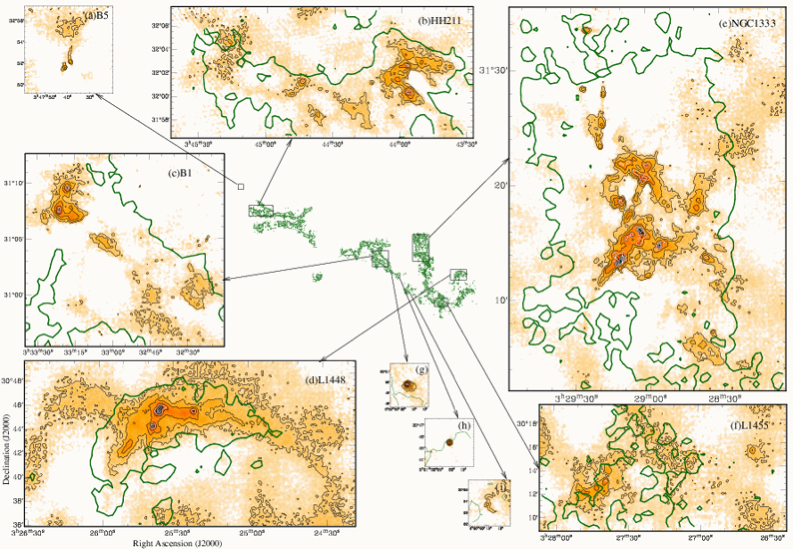|
Jennifer Hatchell
>Research
Teaching
|
|
Jennifer HatchellResearchStar birthIn the submillimetre-wavelength maps below, young stars (orange/black) are seen at the earliest stages of formation, still embedded in their parent molecular cloud (dark green contours). This cloud, in the constellation of Perseus, is one of the nearest star formation regions to Earth at a distance of around 1000 light years. 
There are many unanswered questions in star formation:
Unlike visible or infrared, submillimetre and millimetre wavelength radiation penetrates deep inside these molecular cloud to detect the youngest (proto)stars. Because these wavelengths are blocked by water vapour in the Earth's atmosphere, submm telescopes are found on high, dry sites such as Mauna Kea in Hawaii and the Atacama Desert in Chile. |

